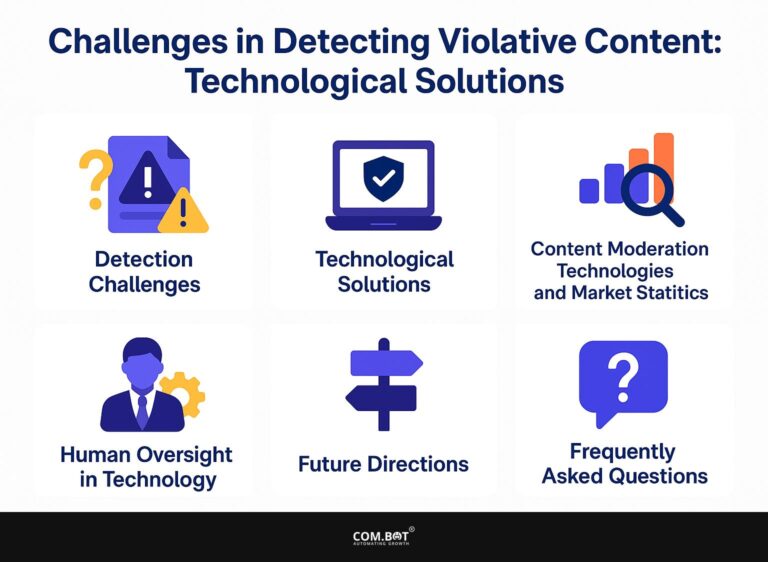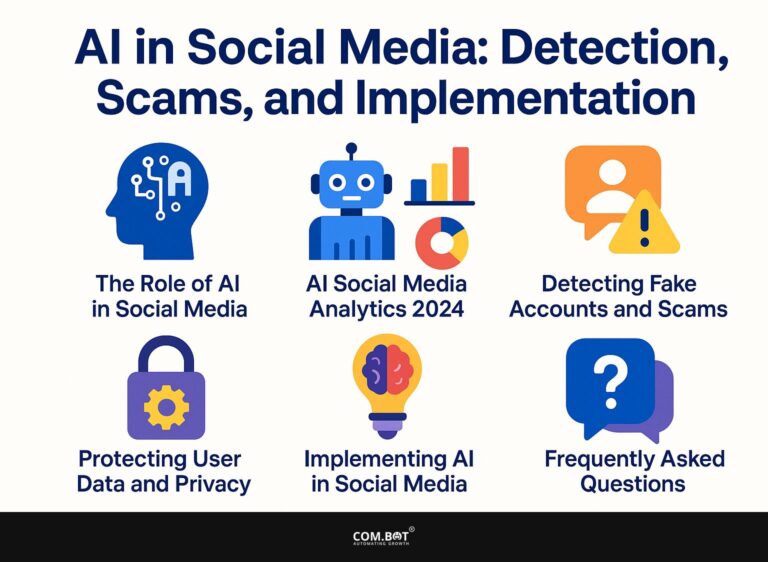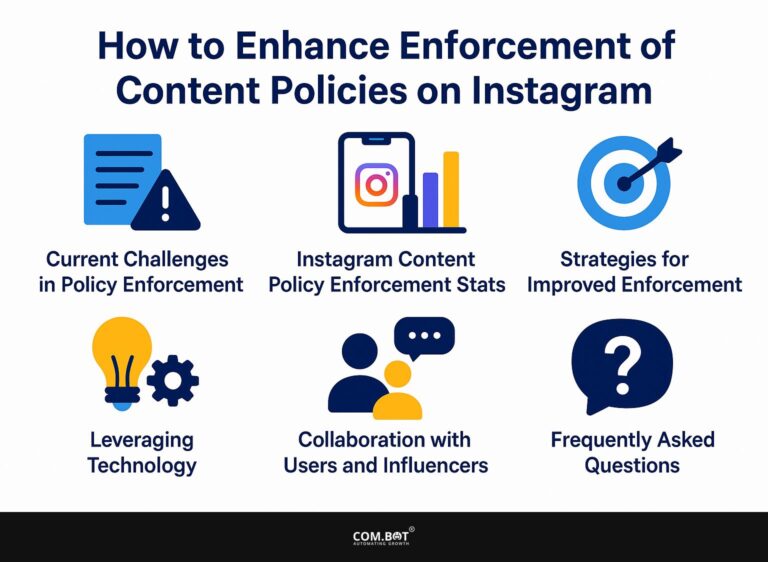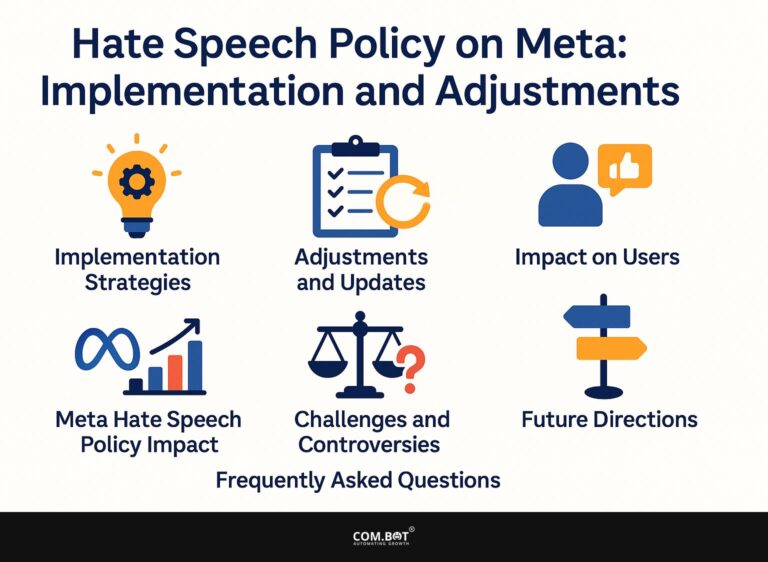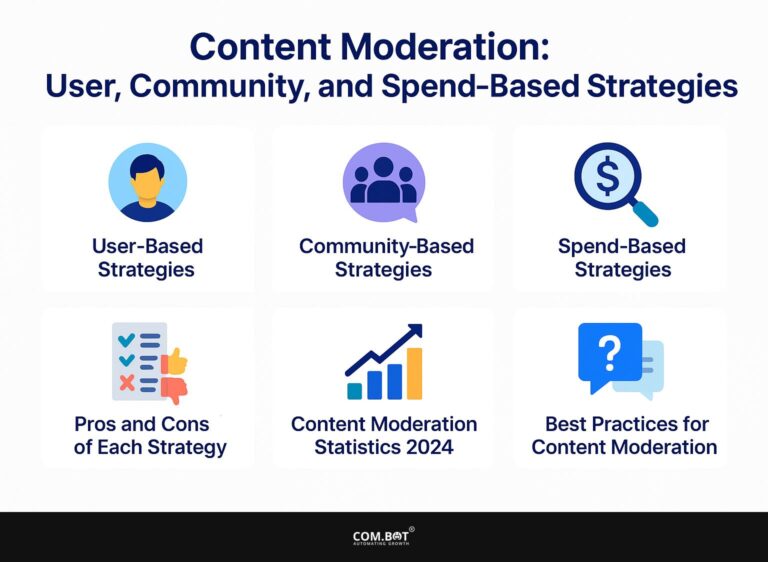Content Moderation Accuracy: Improvements and Challenges
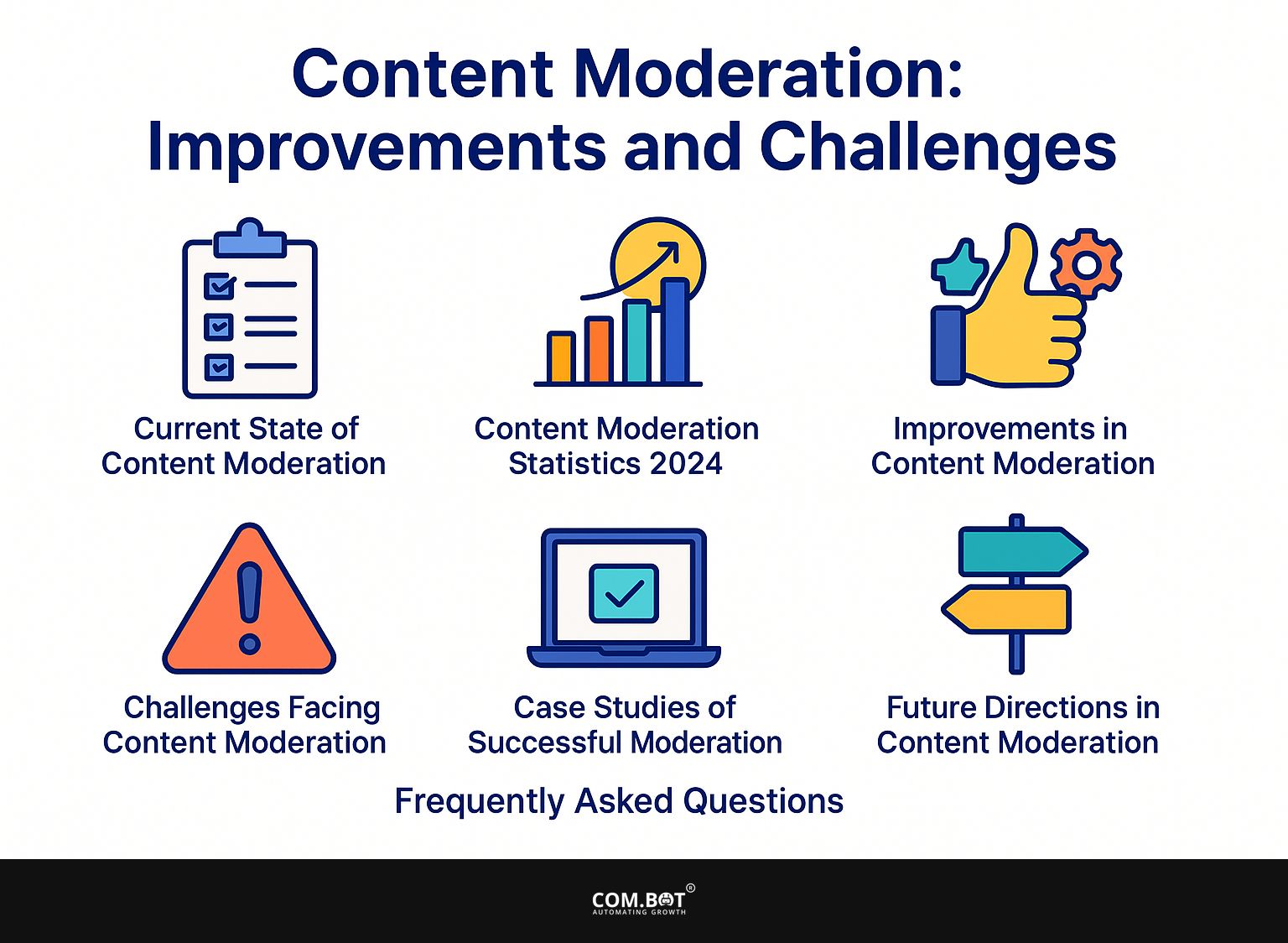
Because users make a lot of content on online platforms, it’s very important to keep an eye on it and manage it well. Striking a balance between enforcing community guidelines and minimizing harmful content is a complex challenge.
This article examines recent progress in content moderation, covering AI technologies, and discusses ongoing problems such as bias and scalability. Learn how improved moderation can make the internet safer and encourage active participation in communities.
Key Takeaways:
- Getting content moderation right is key to keeping the internet safe and friendly.
- The advancements in machine learning and human oversight are improving moderation accuracy rates.
- Platforms need to tackle problems related to expanding their capabilities and addressing bias to guarantee successful and just content moderation.
- 1 Current State of Content Moderation
- 2 Content Moderation Statistics 2024
- 3 Content Moderation Statistics 2024
- 3.1 Content Moderation Highlights: Market Value and Growth
- 3.2 Information on Content Moderation: Population and Usage
- 3.3 Content Moderation Overview: How Well Content Moderation Works
- 3.4 Views on Content Moderation: What People Think About Moderation
- 3.5 Content Moderation: Making it Work Smoothly and Keeping Users
- 3.6 1. Overview of Existing Tools and Technologies
- 3.7 2. Statistics on Accuracy Rates
- 4 Improvements in Content Moderation
- 5 Challenges Facing Content Moderation
- 6 Case Studies of Successful Moderation
- 7 Future Directions in Content Moderation
- 8 Frequently Asked Questions
- 8.1 1. What is content moderation accuracy and why is it important?
- 8.2 2. What are some problems in getting accurate content moderation?
- 8.3 3. How can technology help improve content moderation accuracy?
- 8.4 4. What are some examples of improvements in content moderation accuracy?
- 8.5 5. What problems do users face when content moderation is wrong?
- 8.6 6. What actions can platforms take to continuously improve their content moderation accuracy?
Definition and Importance
Content moderation means watching over content made by users to stop harmful material from spreading, which is important for keeping users safe and trusted.
Effective content moderation begins with clear community guidelines. Platforms like Facebook employ specific standards defining acceptable content, addressing hate speech, adult content, and misinformation.
Moderators use machine learning algorithms to identify inappropriate posts at first, but human review is important for more complex situations. For an extensive analysis of this trend, our comprehensive study on human-centric moderation examines effective strategies and implementations.
Adding user reporting features allows the community to help with moderation. Regular updates to standards based on new trends help platforms stay current and maintain user trust. This increases user retention, as people feel safer and respected online.
Types of Content Moderation
Content moderation can be divided into machine-based, human-driven, and community approaches, each addressing different purposes and problems.
Tools like Google’s Perspective API check and block inappropriate content on their own. This approach is efficient but can miss context, sometimes leading to false positives. Human moderation means that teams check content that has been marked for review, which helps them grasp the details, but it costs more and takes longer.
Community moderation relies on user reports, allowing users to uphold standards, though it can vary depending on how active users are. Balancing these methods often yields the best results, combining efficiency with a human touch to handle complex moderation challenges.
Current State of Content Moderation
Content moderation today involves using complex tools while dealing with ongoing issues like user privacy and algorithm bias. This approach aligns with the principles outlined in our analysis of content moderation strategies that address transparency, challenges, and solutions.
Content Moderation Statistics 2024
Content Moderation Statistics 2024
Content Moderation Highlights: Market Value and Growth
Information on Content Moderation: Population and Usage
Content Moderation Overview: How Well Content Moderation Works
Views on Content Moderation: What People Think About Moderation
Content Moderation: Making it Work Smoothly and Keeping Users
Content Moderation Statistics 2024 provides an extensive look into the burgeoning field of content moderation, emphasizing its market growth, usage metrics, effectiveness, public opinion, and efficiency challenges. The information shows the present situation and estimates for what’s to come, demonstrating the growing importance of content moderation online.
Market Value and Growth demonstrate the industry’s rapid expansion from a current market value of $7.5 billion to a projected $23 billion. This growth highlights the rising demand for advanced moderation tools and services as online content spreads across platforms.
Population and Usage statistics reveal that 66% of the global population engages with social media, dedicating an average of 2 hours daily. Engagement reaches 80% in the top 10 populated countries, illustrating the massive scale of user interactions requiring moderation.
- Content Moderation Effectiveness highlights the impact of fact-checking, reducing belief in false headlines by 27% and sharing by 25%. Moreover, 97.5% agreement between crowdsourced judgments and expert evaluations shows the reliability of community-driven moderation.
- Public Opinion on Moderation indicates strong support for misinformation reduction, with 80% of the public in favor. Political perspectives vary, as 93% of Democrats and 65% of Republicans support moderation, reflecting differing views on digital content governance.
- Efficiency and Retention data reveal challenges within the workforce, predicting an 85% attrition rate among moderators, coupled with a 30% annual turnover rate. Even with high demands, the speed and accuracy of assessments remain strong at 95%.
Overall, the Content Moderation Statistics 2024 highlight the industry’s rapid growth, the critical role of moderation in maintaining digital integrity, and the pressing challenges related to workforce stability. As more people use social media, the need for good content moderation grows, requiring ongoing investment and new ideas in this important area.
1. Overview of Existing Tools and Technologies
Prominent tools like Microsoft Content Moderator and Moderation AI offer platforms that integrate AI with user feedback for effective moderation.
A comparison of content moderation tools reveals distinct features that cater to various needs. For example, Microsoft Content Moderator costs $1.50 for every 1,000 images and comes with tools for reviewing text, images, and videos, making it appropriate for businesses with various content types.
Amazon Rekognition operates on a pay-as-you-go model, providing real-time moderation for images and video analysis, perfect for developers integrating into existing workflows. Meanwhile, Akismet (around $5/month) focuses on spam filtering for comments, a must-have for blogs.
By assessing your specific moderation requirements-including speed, content type, and budget-you can select the best tool for your environment.
2. Statistics on Accuracy Rates
Research shows that automated moderation tools correctly identify content 80-90% of the time, but human review is still required for more detailed analysis.
For example, Reddit employs a blend of AI and human moderators. The AI systems effectively identify and filter out obvious spam, allowing people to focus on more complex decisions, such as examining the context and goals.
Tools like Microsoft’s Content Moderator help keep things balanced by finding offensive content effectively, but human review is important for recognizing subtle cultural differences. To implement a similar strategy, consider using AI moderation tools alongside a dedicated team that can provide the necessary oversight, ensuring both efficiency and quality in content management.
Improvements in Content Moderation
Recent progress in machine learning and AI is enhancing content moderation, speeding up the process and increasing accuracy in identifying unsuitable content. Curious about the specific challenges involved? Our analysis on technological solutions for detecting violative content delves into these complexities.
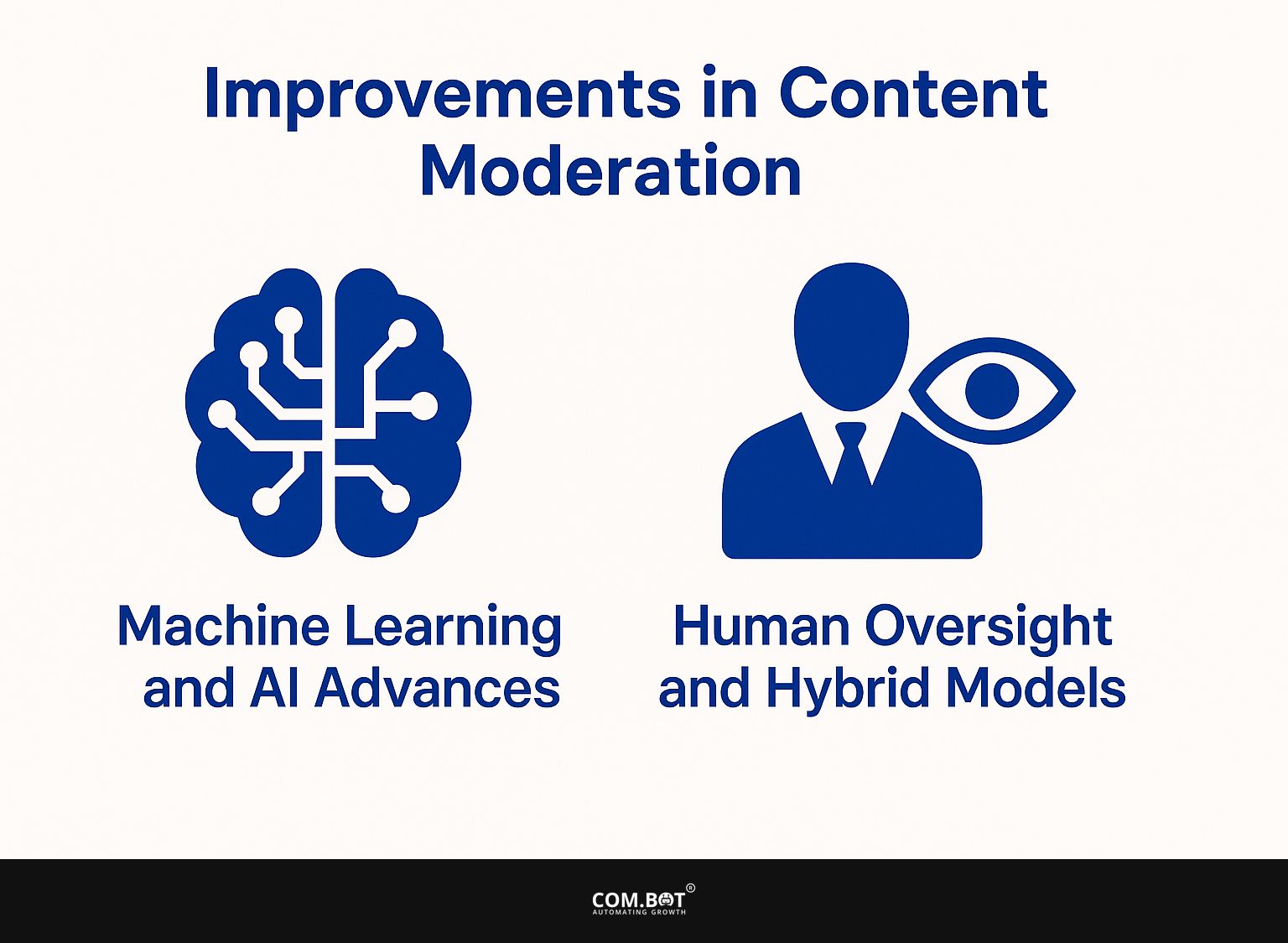
1. Machine Learning and AI Advances
Machine learning algorithms improve moderation efficiency by employing real-time detection methods and continuously learning from data inputs.
For instance, Google’s AutoML can be trained to identify inappropriate content by analyzing previous moderation decisions, drastically reducing human review time. In the same way, IBM Watson uses its natural language processing skills to identify hate speech or harmful comments in online discussions.
Examples from platforms like Facebook reveal that using these tools has cut manual moderation work by 60%. This lets teams concentrate on more detailed problems, as the algorithms handle regular content filtering well.
2. Human Oversight and Hybrid Models
AI tools combined with human oversight are important for careful content review.
One noteworthy example is Twitter, where algorithms initially filter harmful content, but trained human moderators subsequently review flagged posts. This dual approach allows for context-based decisions; for instance, while an AI might mark certain tweets as abusive based on keywords, a moderator can assess the intent and context behind the message.
Training methods for moderators often include workshops on spotting bias and practical exercises, helping them handle difficult situations effectively. This model helps platforms stay efficient while also being considerate of users’ emotions.
Challenges Facing Content Moderation
Even with progress, content moderation still has major obstacles like handling large volumes, prejudice in algorithms, and cultural differences that influence results.
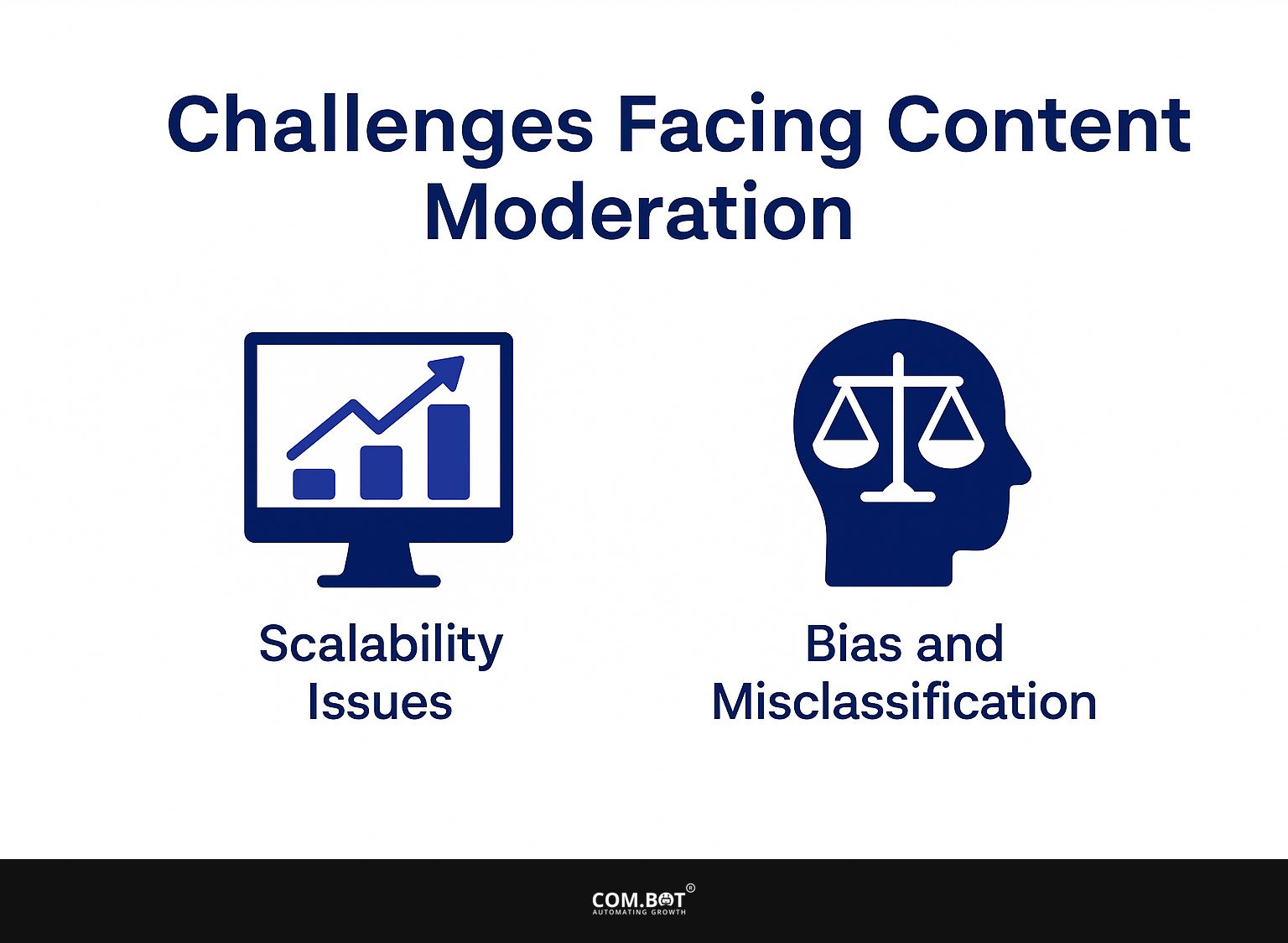
1. Scalability Issues
Scalability remains a critical challenge, with platforms like YouTube facing difficulties moderating millions of video uploads daily. To address these issues, platforms can implement advanced automation tools, such as machine learning algorithms that aid in content moderation.
YouTube uses AI to find and mark unsuitable content so that human moderators can concentrate on more complex situations. Community-based reporting systems allow users to report questionable uploads, improving monitoring.
By keeping track of metrics such as daily uploads and how quickly moderation teams respond, platforms can adjust their strategies to maintain a balanced and safe environment, greatly improving the ability to grow and user satisfaction.
2. Bias and Misclassification
Algorithmic bias presents a serious issue, leading to misclassification of content and potentially harmful outcomes for users. To tackle algorithmic bias, platforms like Facebook have revised their content moderation policies.
For instance, they now offer transparency reports, which detail how moderation decisions are made, and provide appeals processes for users to contest unfair actions. Employing diverse data sets during the training phases of moderation algorithms can significantly reduce bias.
By using feedback from many users, platforms can improve their algorithms, resulting in fairer content assessment and fostering a more friendly online space.
Case Studies of Successful Moderation
Successful content moderation methods can be seen in many online platforms that have effectively controlled user-generated content while keeping community rules.
Platform-Specific Strategies
Each platform has its own moderation techniques to handle its specific content challenges and user communities. For example, TikTok uses community moderators to check any reported content and make sure it follows rules focused on safety and truthfulness.
In contrast, Twitter relies heavily on algorithmic filtering to detect and remove harmful content, often sending users warnings about potential violations.
Both platforms have established clear community guidelines-TikTok’s focuses on creativity and positivity, while Twitter’s prioritize freedom of expression while combating misinformation. These strategies highlight how each platform tries to maintain both user interest and truthful content.
Future Directions in Content Moderation
Content moderation is being reshaped by new technology and changing rules, aiming to protect users while upholding freedom of speech. The overlapping policies in content moderation can complicate these efforts-our detailed case studies explore real-world scenarios and their implications.

1. Emerging Technologies
Emerging tools like blockchain and advanced AI will improve content moderation by making it more transparent and accountable.
Blockchain technology allows for immutable tracking of content changes, enabling moderators to verify content origins and modifications. For example, platforms like Civil use blockchain to maintain editorial integrity by recording each change made to an article.
AI tools such as Google’s Perspective API analyze comments to assess their content and tone, assisting moderators in prioritizing which comments to review. By using these technologies, organizations can improve the accuracy of moderation. This helps build trust among users, creating healthier online communities.
2. Policy and Regulation Considerations
Rules and laws about content moderation are changing to deal with safety issues while also considering user privacy and free speech.
Important rules like the General Data Protection Regulation (GDPR) in Europe require specific ways to manage user data, promoting openness in how data is collected and used.
In the U.S., Section 230 provides website operators some immunity from liability for user-generated content, igniting heated debates about the responsibilities of platforms.
As these laws develop, ongoing discussions center on whether platforms can maintain a neutral stance while upholding ethical moderation standards. Stakeholders argue for more accountability, emphasizing the need for clear guidelines ensuring fair treatment without infringing on free expression.
Frequently Asked Questions
1. What is content moderation accuracy and why is it important?
Content moderation accuracy means checking and deciding if content on a platform, like social media or a website, is suitable and of good quality. It’s important because it ensures users have a safe and enjoyable experience, helps the platform keep a positive reputation, and meets legal and ethical standards.
2. What are some problems in getting accurate content moderation?
A challenge is the large volume of content created and shared every minute, which makes it hard to check and control quickly. Cultural and language differences can cause misunderstandings, making it hard to judge if content is suitable.
3. How can technology help improve content moderation accuracy?
Technology like artificial intelligence and machine learning can help find and mark content that might be inappropriate for human moderators to check. This can improve efficiency and accuracy in the moderation process.
4. What are some examples of improvements in content moderation accuracy?
Platforms have implemented stricter guidelines and policies, improved moderation tools and processes, and increased the number of moderators to handle the increasing amount of content. They have worked with specialists and groups to better grasp cultural and social standards.
5. What problems do users face when content moderation is wrong?
Incorrect content moderation can allow harmful or offensive material to spread, which can negatively affect users’ mental health and well-being. It can also lead to the spread of misinformation and further perpetuate societal issues, such as hate speech and discrimination.
6. What actions can platforms take to continuously improve their content moderation accuracy?
Platforms can regularly review and update their policies, provide training for moderators, solicit feedback from users, and continuously monitor and adjust their moderation processes. They can also collaborate and learn from other platforms and organizations to stay updated on industry standards and best practices.
